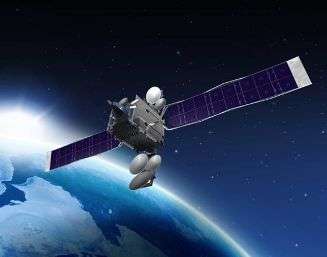Specialist measurement facilities and techniques developed at NPL crucial in the development new communication

The satellite, HYLAS 2, was built for Avanti Communications plc, a UK-based provider of data communications by satellite. NPL characterised two dual port circularly polarised probes for Orbital Sciences Corporation (OSC), the US-based company Avanti contracted to build the satellite. HYLAS 2 will provide communications capacity to consumers, enterprises, mobile carriers and governments covering Africa, Caucasia and the Middle East regions.
The Challenge
The gain and directionality of on-board antennas are important in a geostationary satellite in defining its 'footprint' - the area on the Earth's surface where service can be provided - and in ensuring that communications back to the satellite, whether from users or the Internet gateway, can be made at minimum power needed to compensate for local conditions at the surface, including weather variations.
Satellite manufacturers OSC turned to NPL for help to ensure that its designs met the demanding specifications for the needed gain and cross pole performance of the antennas.
The Solution
The near-field scanning methods for calibrating the all-important antennas carried on board the spacecraft require a precisely characterised probe that is moved over a grid of points in front of the antenna. NPL calibrated this probe using facilities and techniques that were developed at NPL with funding from the National Measurement System (NMS). NPL used its specialised range, which provides a near reflection free environment in which to make transmission measurements between a source antenna and the probe under test. The measurement techniques employed are absolute methods, in that they do not require reference to the known properties of another antenna.
By the time a spacecraft antenna is in orbit it is too late to affect its operating characteristics, so it was essential that this method gave dependable results.
The Impact
John Kvarnstrand, Senior Principal Engineer at OSC, has over 15 years' experience at the leading edge of antenna design: "The measurements we made at NPL helped us … demonstrate compliance with a demanding specification," he said.
As a means of providing access to broadband, satellite is less familiar than cable and ADSL. But it may be crucial to meeting the UK government's pledge to introduce measures to ensure the rapid roll-out of superfast broadband across the country.
In the UK, areas which are not reached by cable, and are too remote from BT exchanges to be suitable for ADSL, satellite may be a cost-effective alternative and in places the only plausible method.
The government body BDUK estimates that that between 100,000 and 200,000 of homes and businesses will eventually be served by satellites such as HYLAS 2 as there is no sensible economic alternative.
Provided by National Physical Laboratory




















